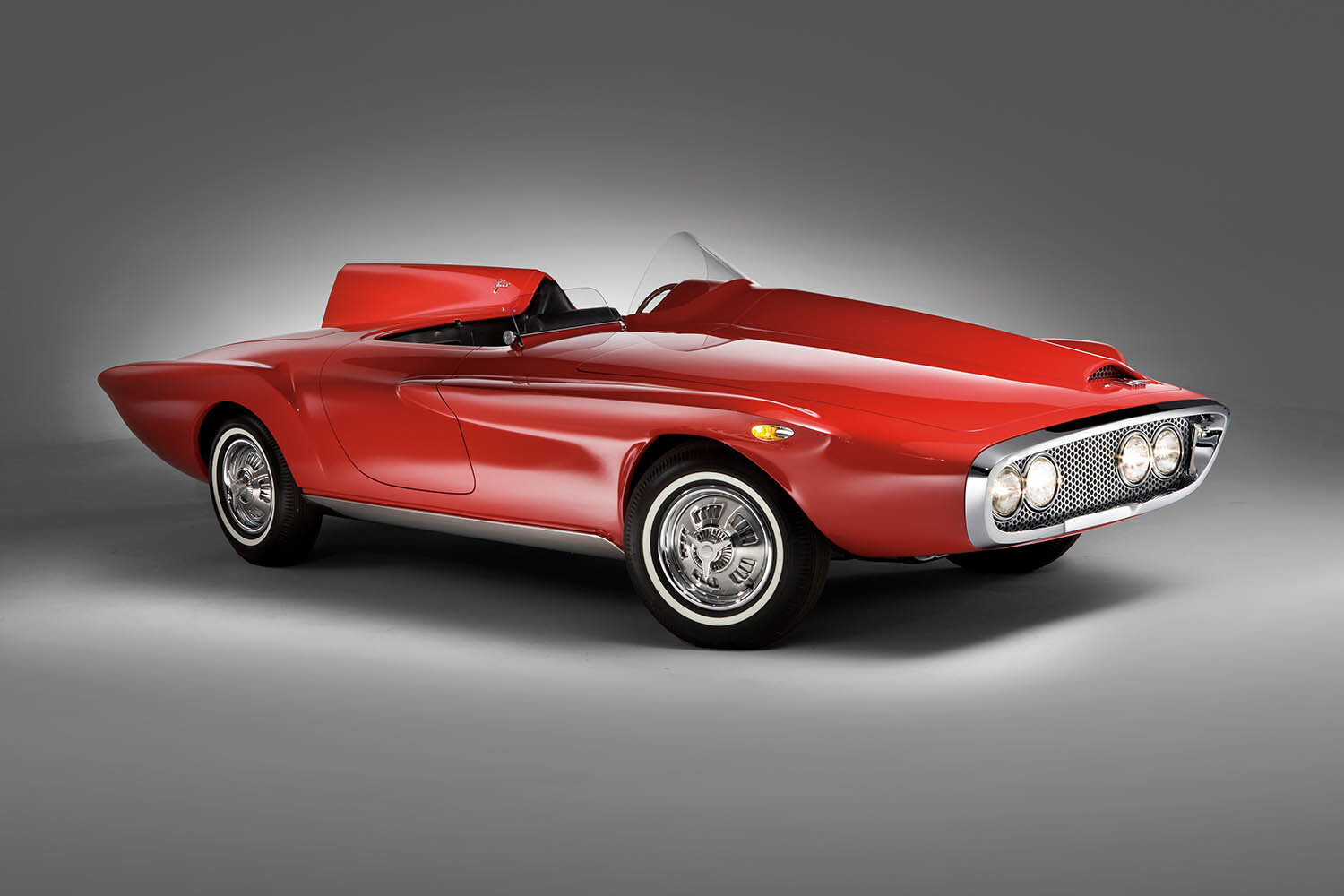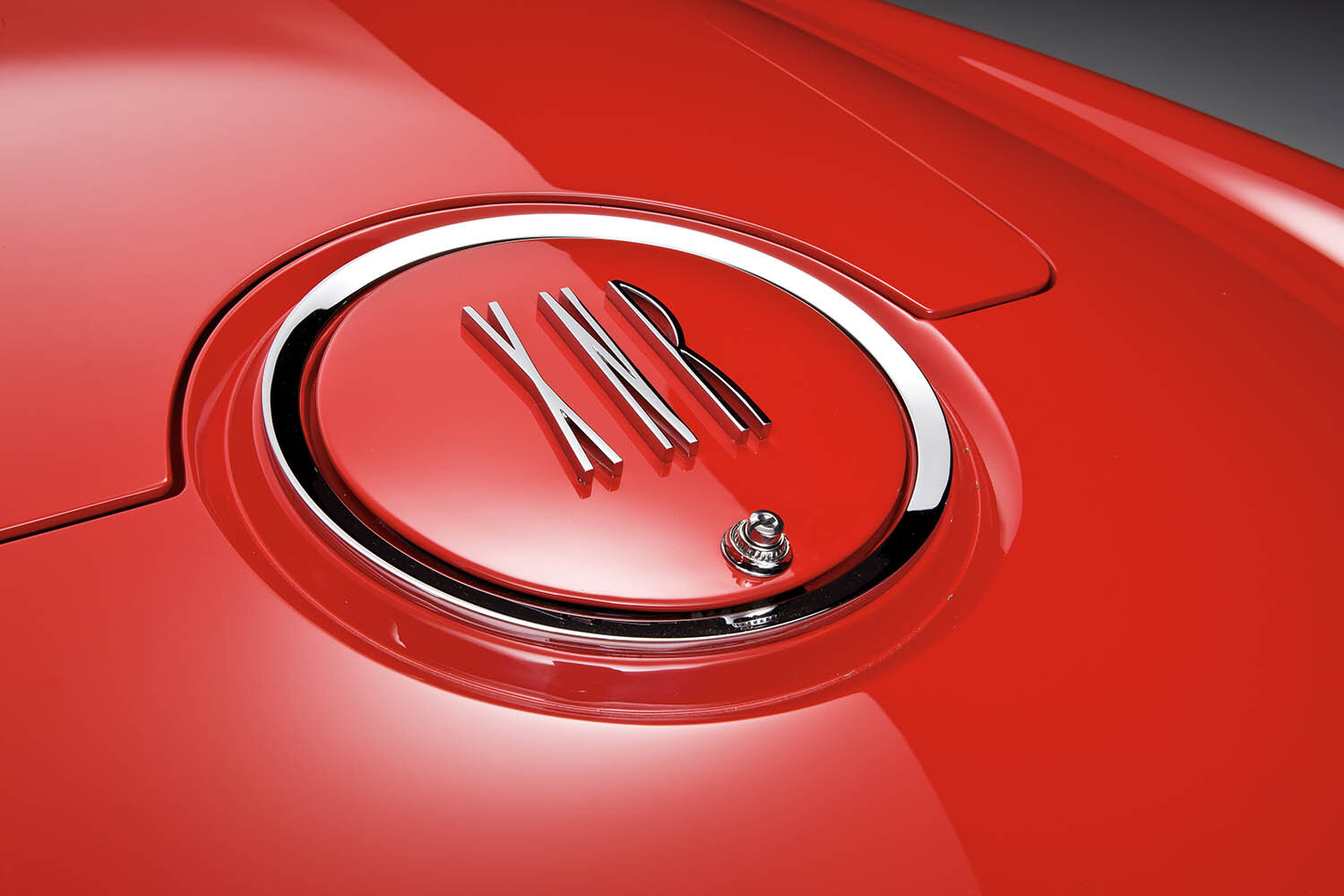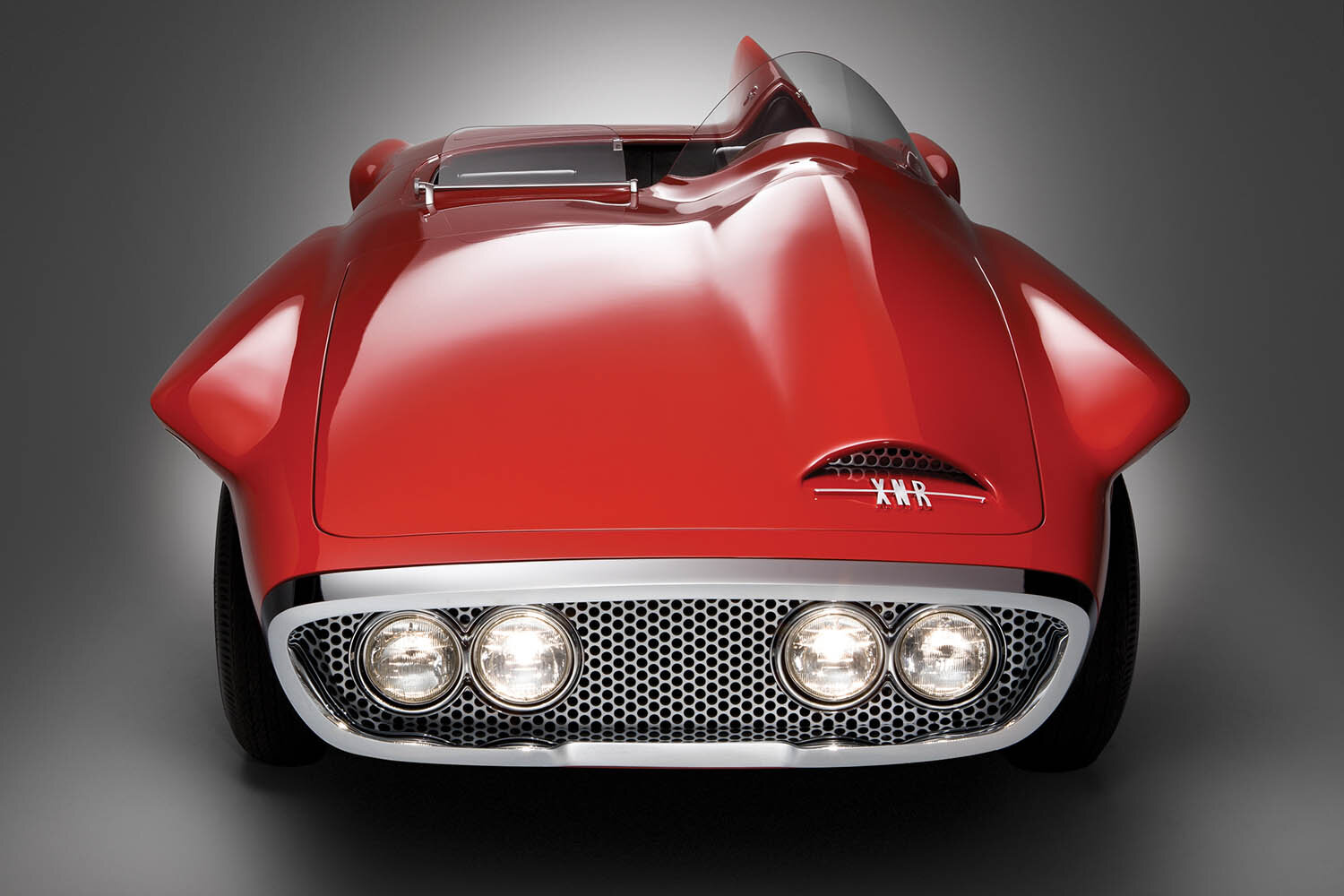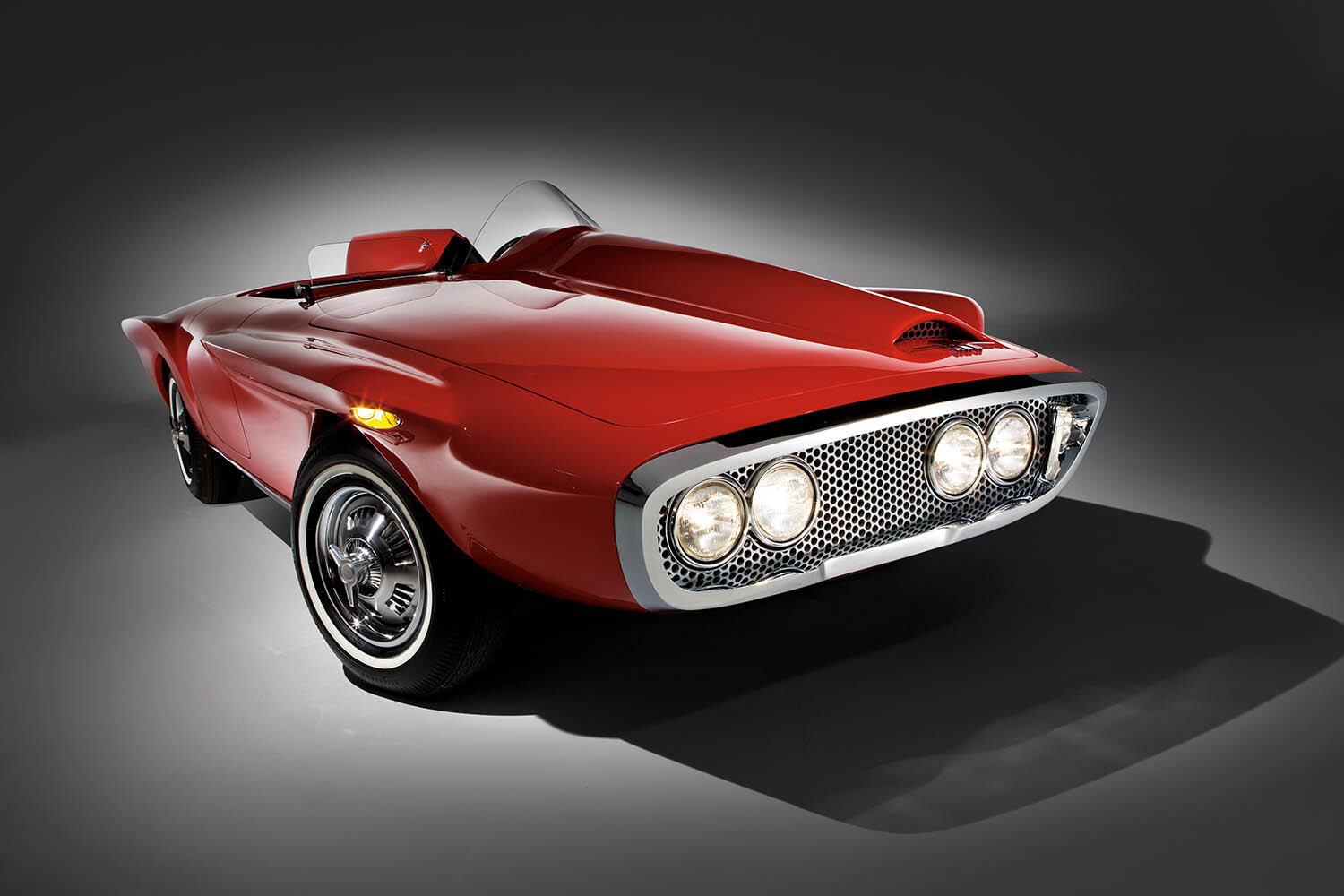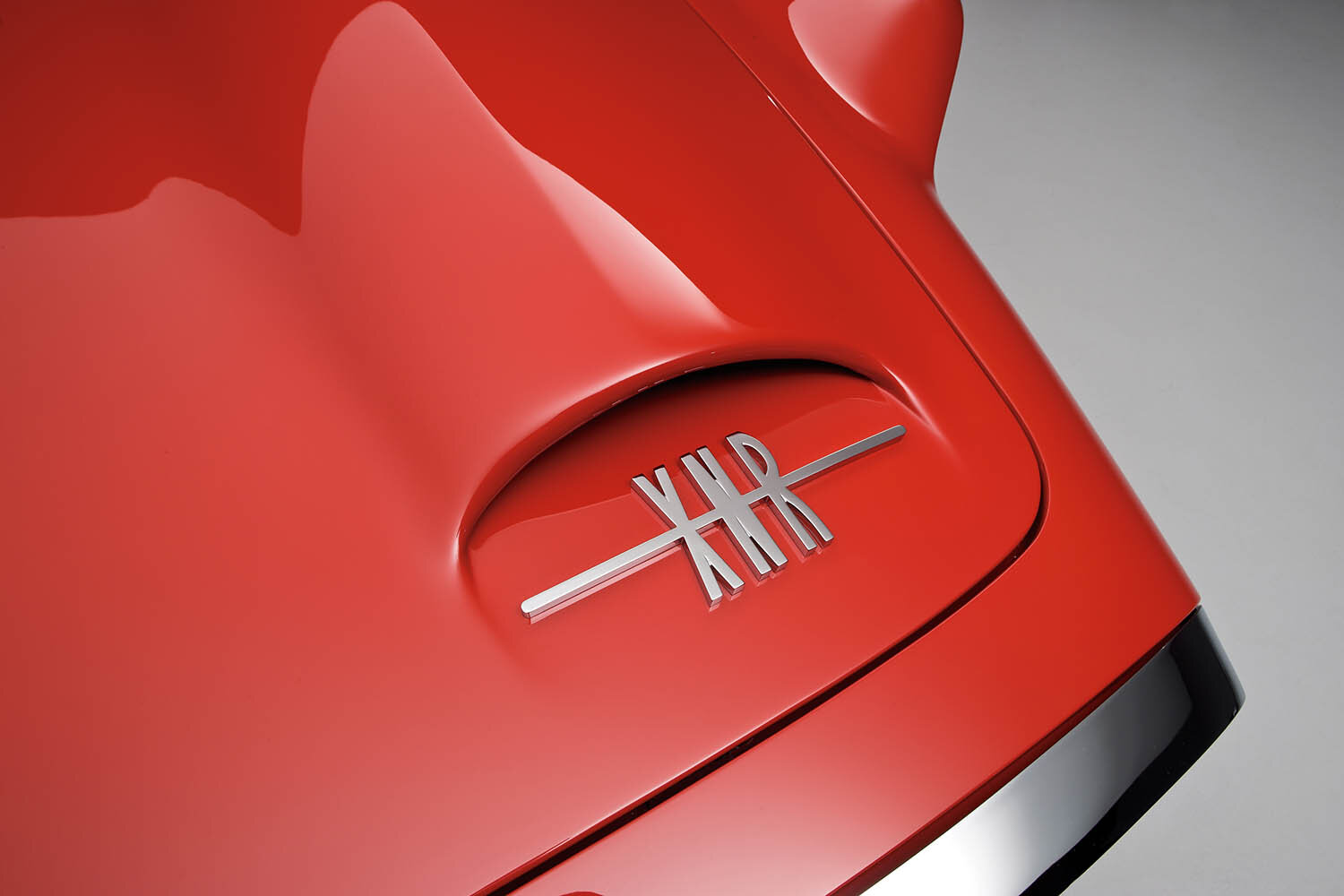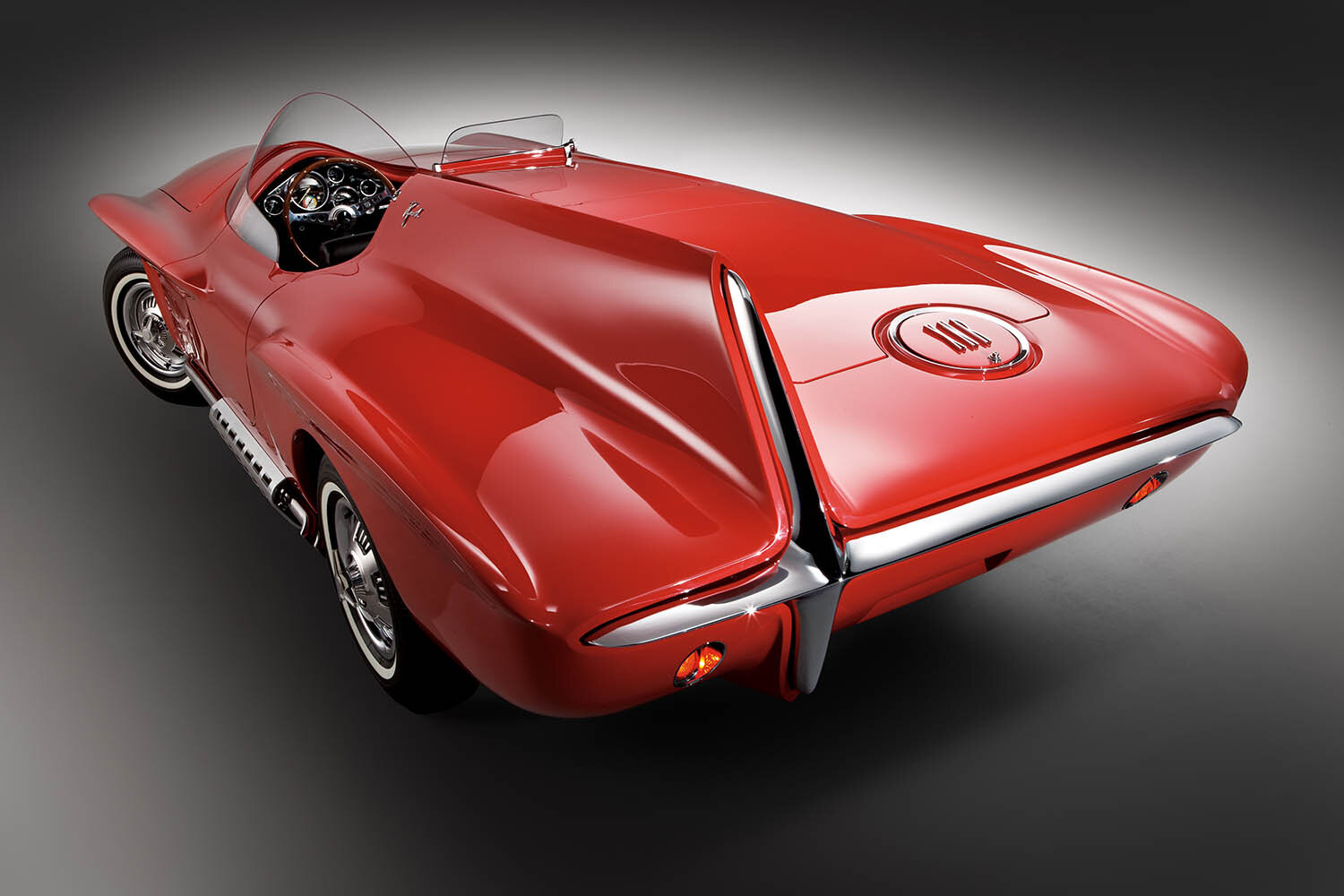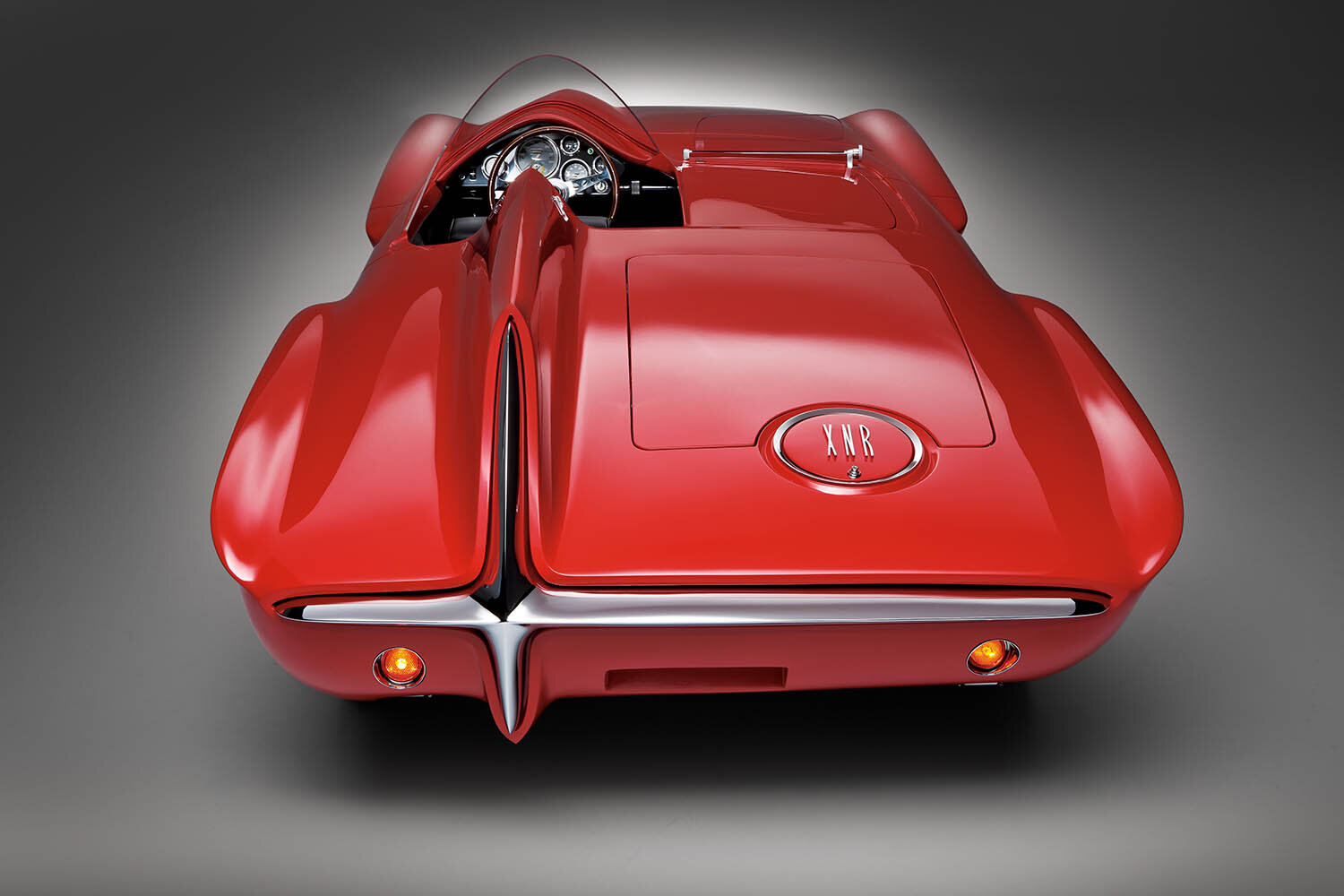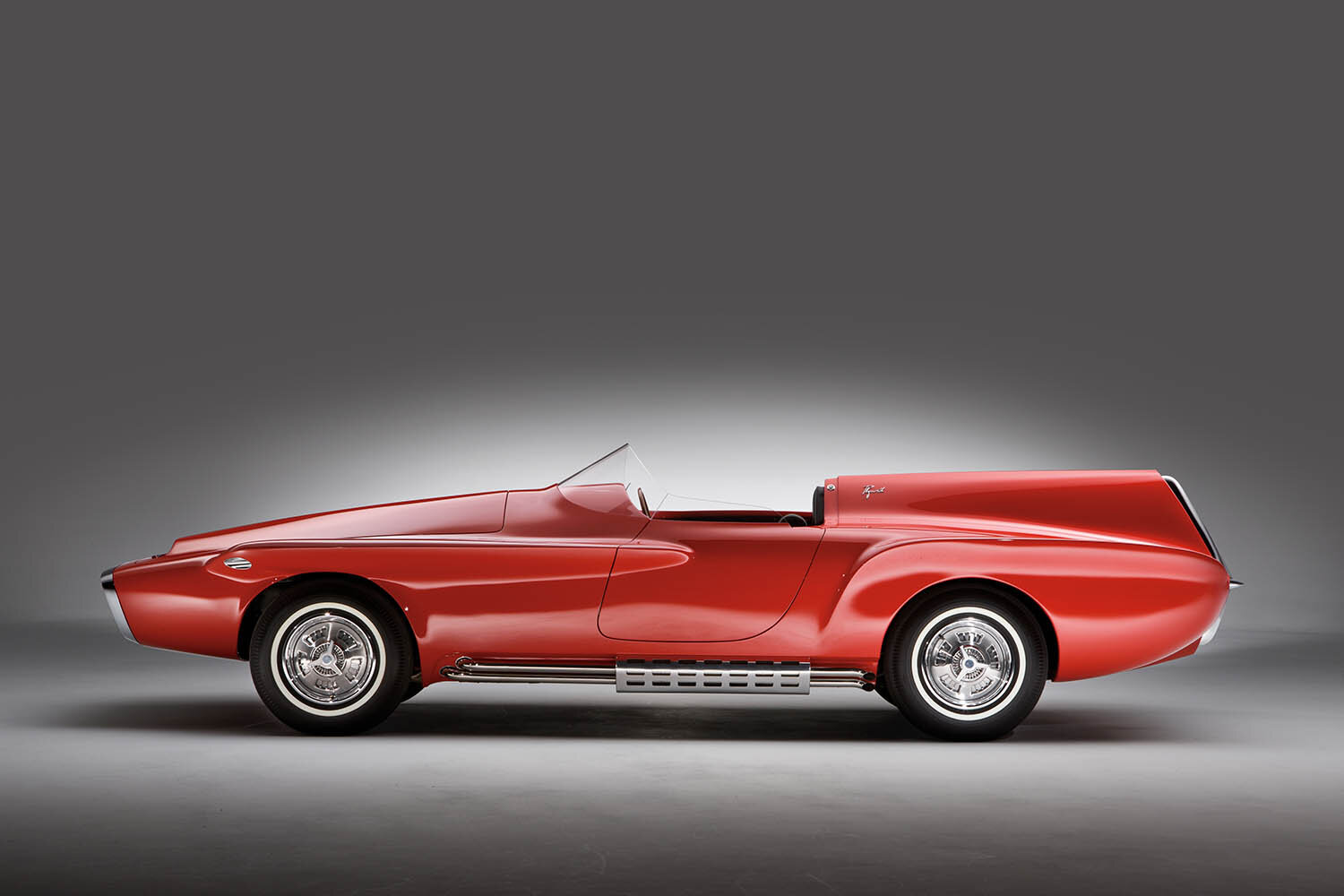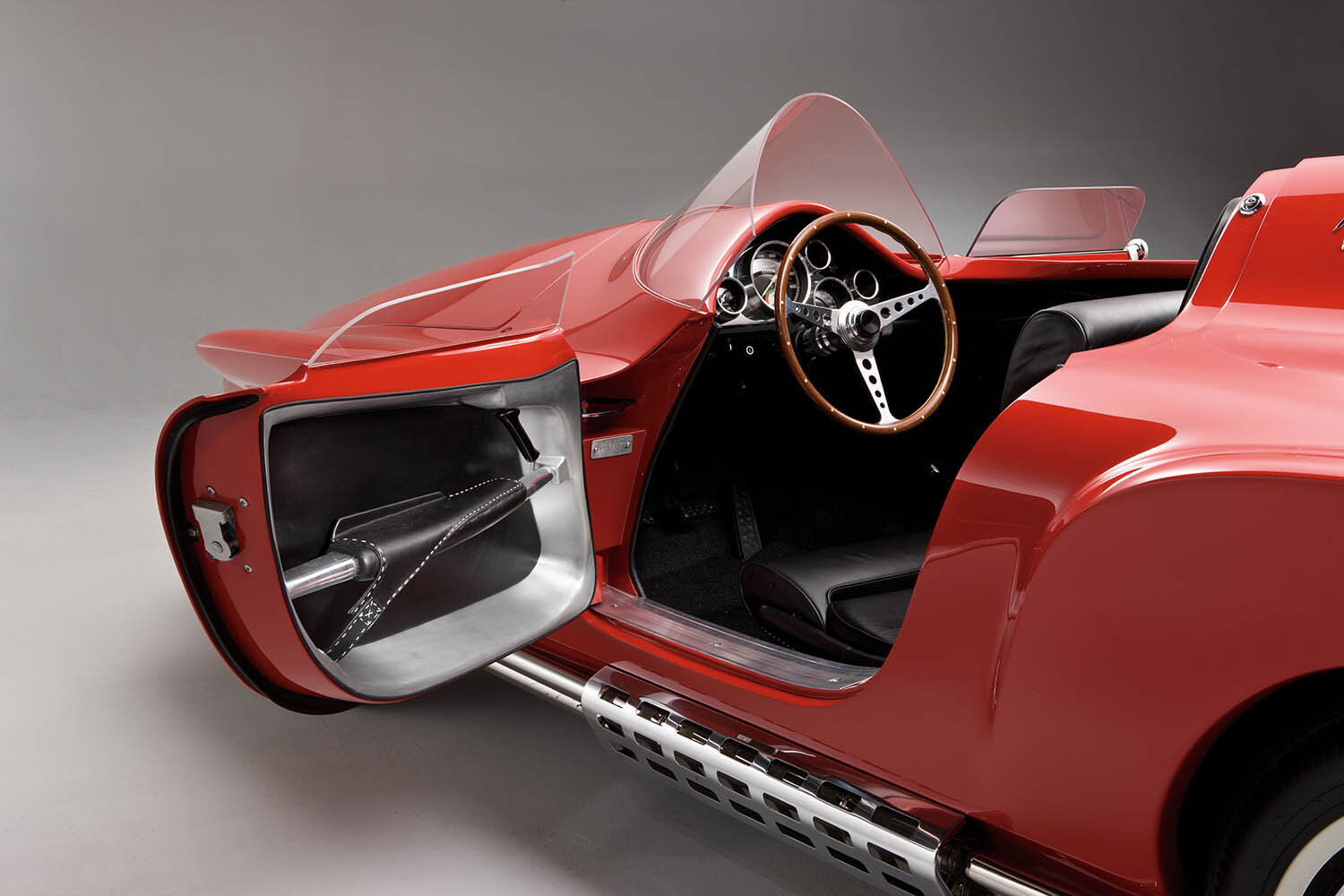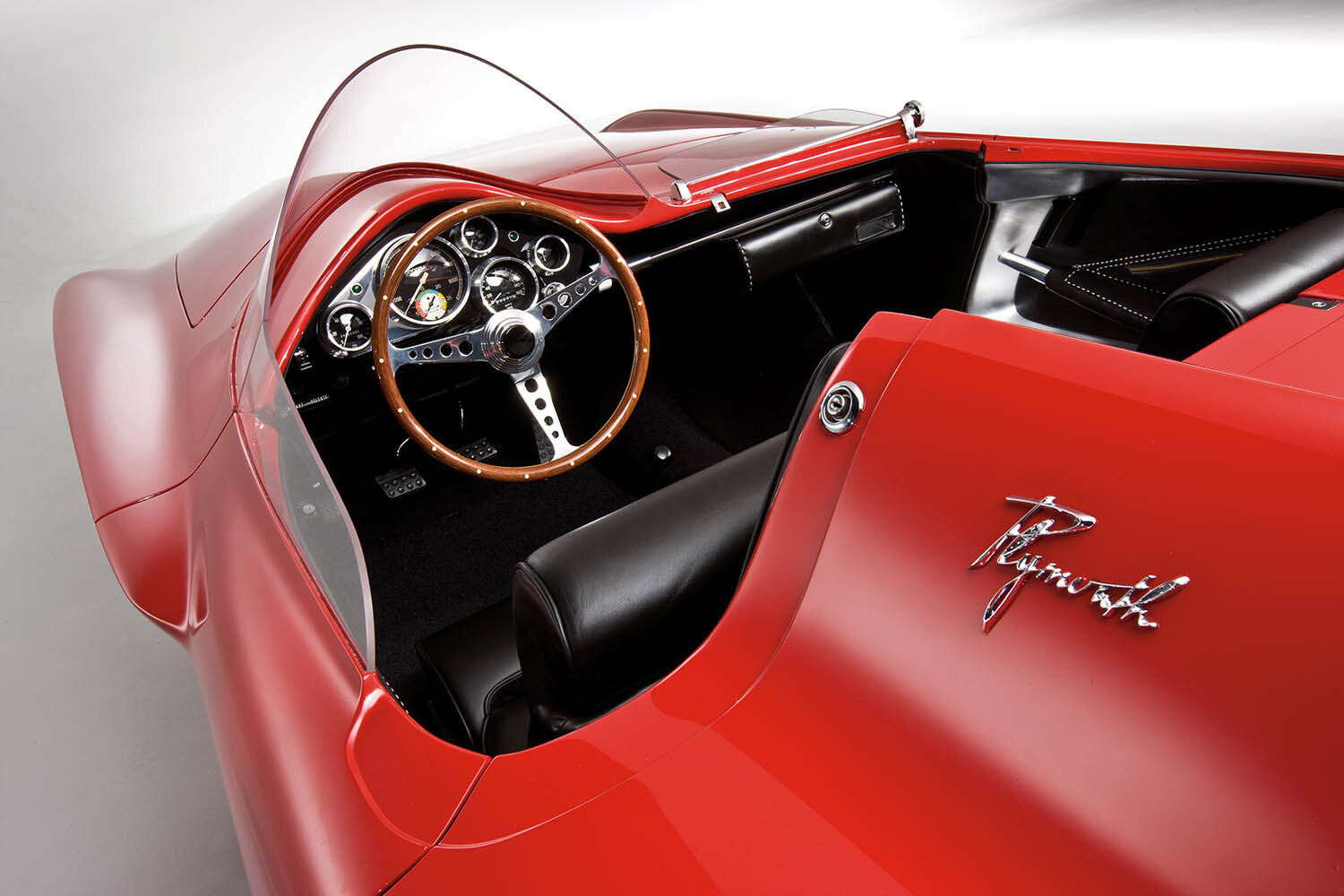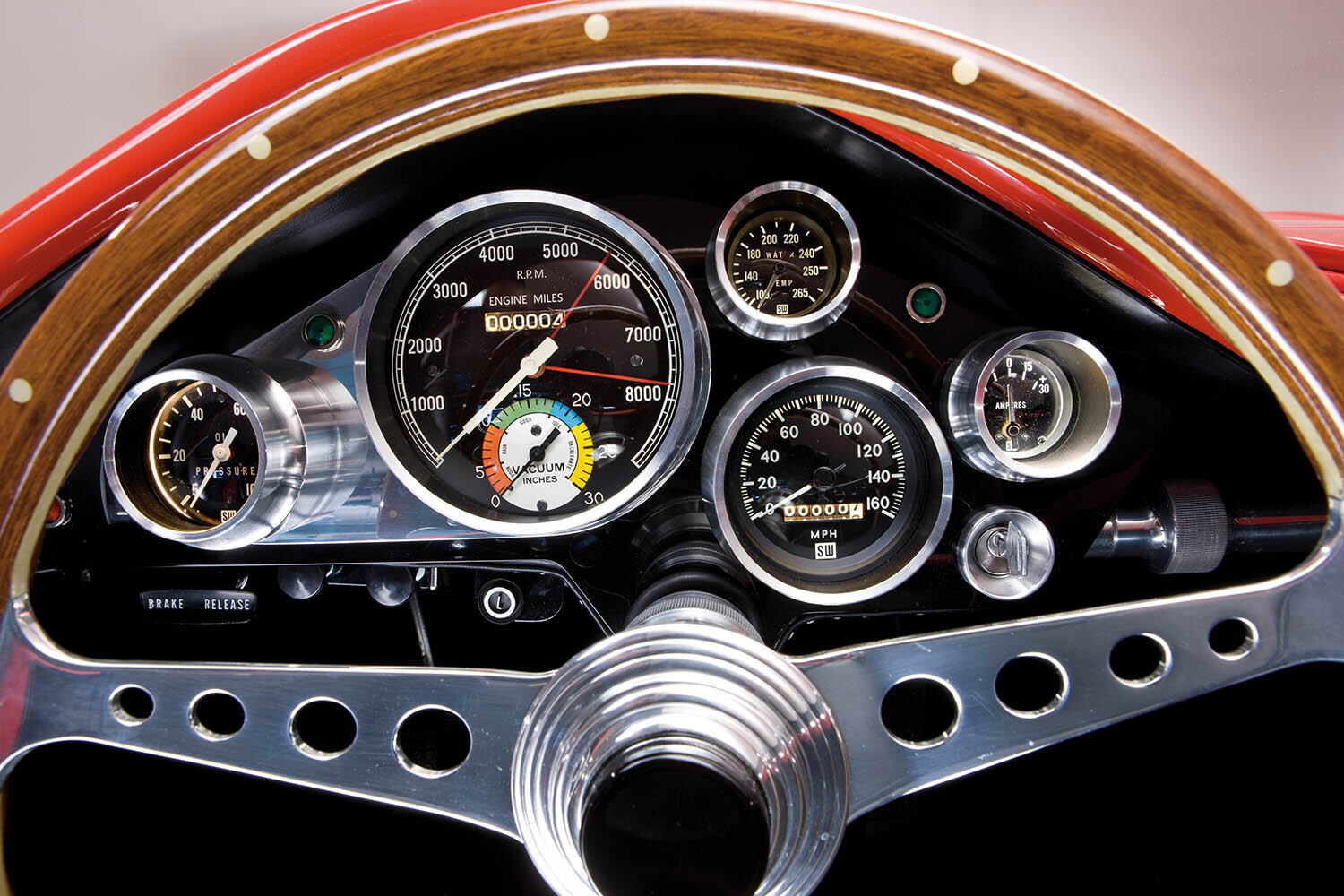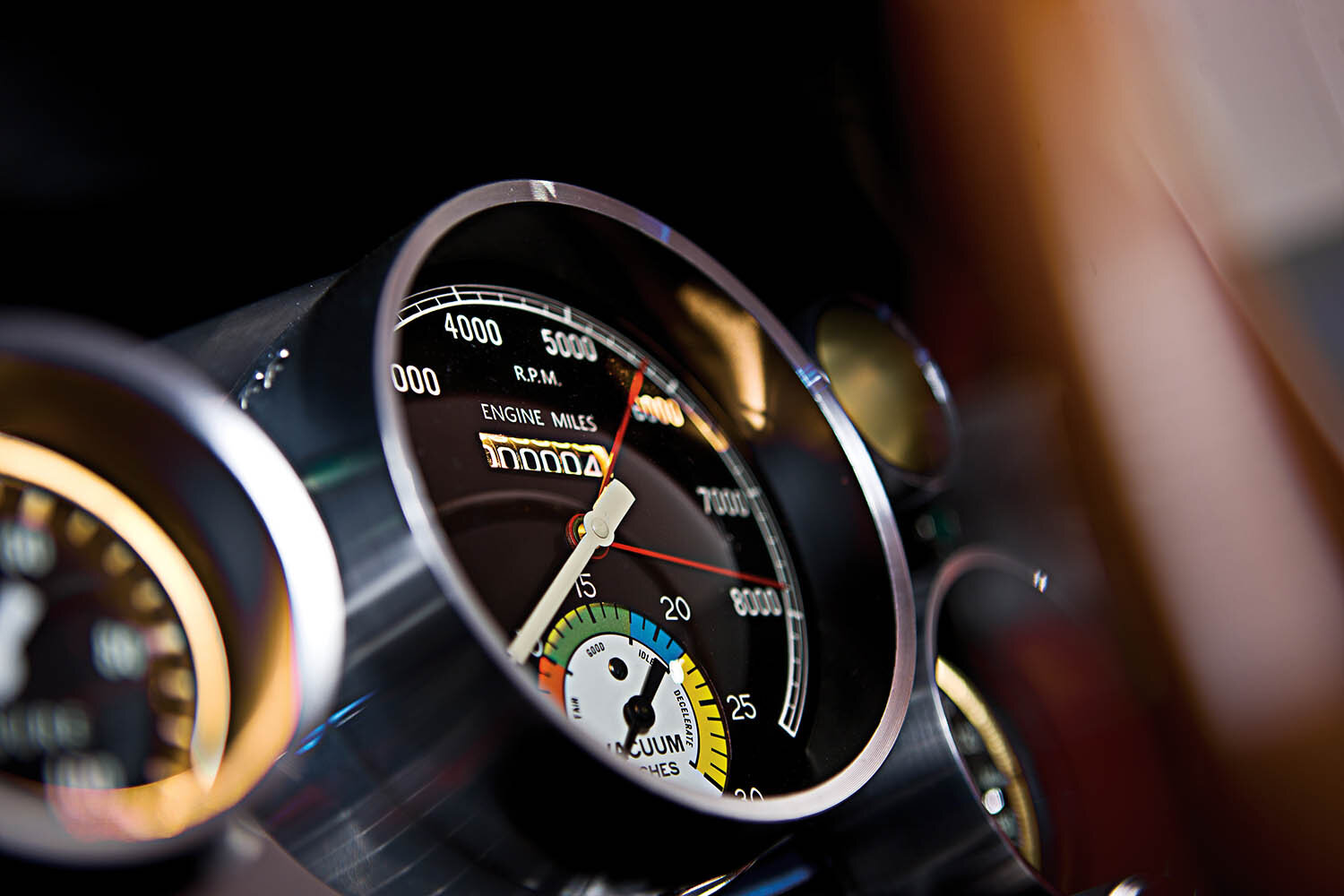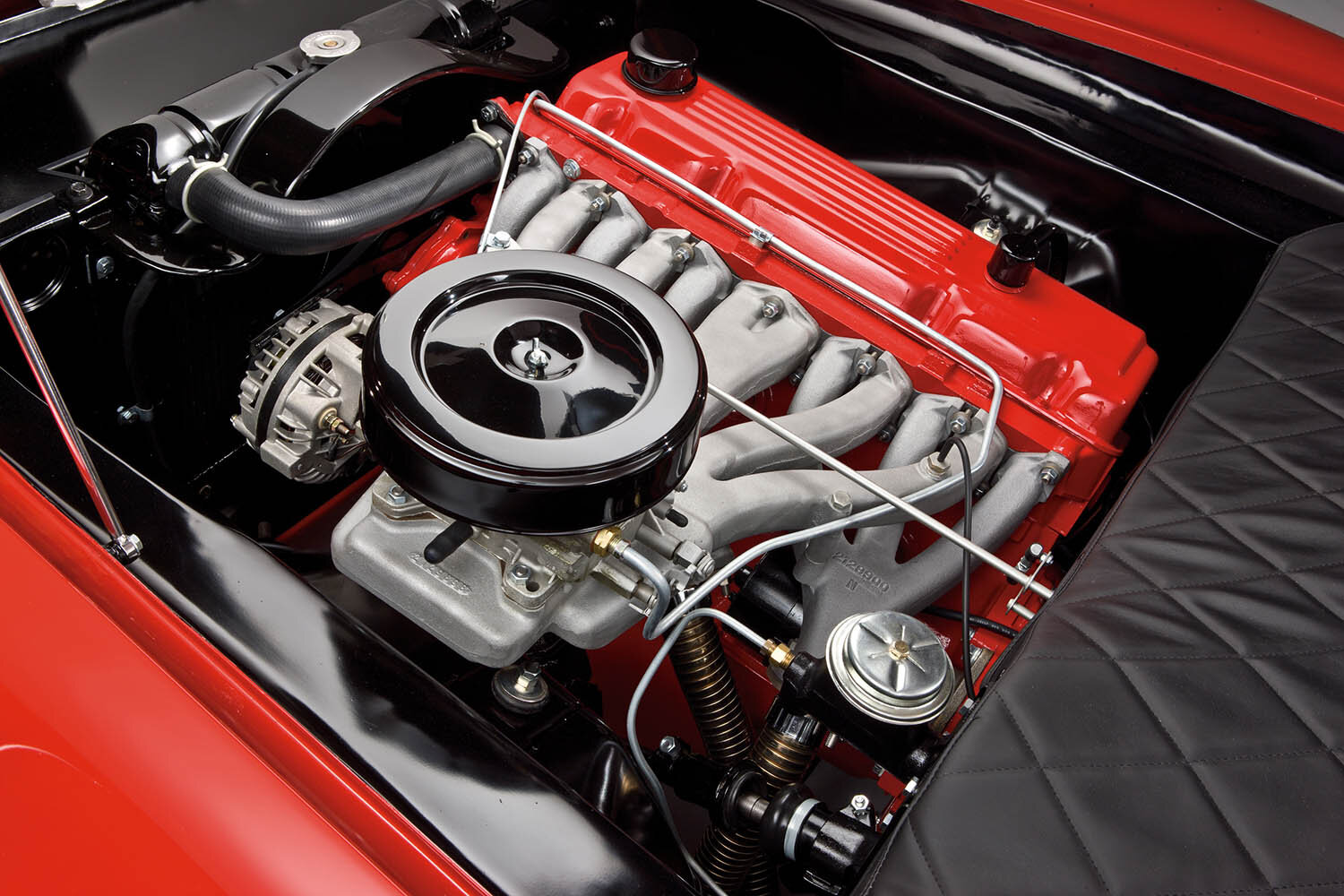The future from yesterday
In the late 1940s America's motor industry saw a time of innovation and revolutionary car designs. Car designs emerged with styling cues such as fins and streamline bodies inspired by the jet aircraft and rockets of the time. Plymouth, in contrast to its competitors, valued engineering supremacy more than visual appeal.
Eventually sales for parent company Chrysler slowed, causing them to realise that their absence of style in their cars was taking its toll. In 1947 automotive designer Virgil Exner changed Chrysler's design direction into streamline cars, sharply contrasting from their previously squarish car bodies.
The XNR, named for the design chief himself, was built on the modified Plymouth Valiant chassis, with a dramatic, asymmetrical shape that polarised onlookers. A large, offset hood scoop led to an extended sculptured rise, which faired into the cowl and embraced a low, driver’s side curved windscreen, then flowed smoothly into a single offset tail fin. On the passenger side, a folding, Brooklands-style, flat windscreen was accented by a snug-fitting, steel tonneau cover. Finally a high-revving 170 CID I-6, which could be tuned to 250bhp was chosen as the powertrain.
Photos: © Shooterz.biz courtesy of RM Auctions

